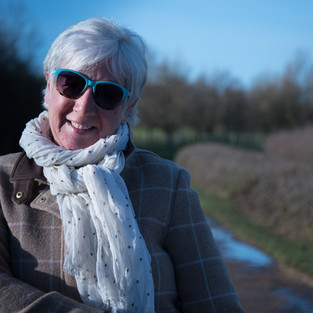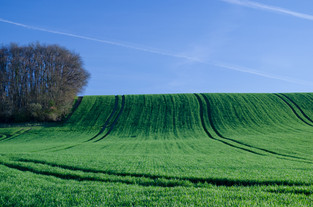White Balance, do I care?
- halkidikiskipper
- Nov 26, 2020
- 3 min read
You'll often hear photographers talking about White Balance, a subject which sounds complicated and I suspect makes most people just switch off. But white balance is important for a couple of reasons, firstly it makes a huge difference to how your pictures look and secondly it's something that camera's (whether you've got a fancy DSLR or a phone) struggle with. It's one of the reasons that sometimes when you look at an otherwise good picture you're disappointed with way it looks.
Just to emphasise how cameras can struggle with White Balance I thought I'd show you an extreme example, taking a simple picture of a white and black card. Now I've got a fancy pants DSLR, here's how it copes. As you can see the camera has made a reasonable stab at the white card but made a real dogs breakfast of the black card in the second picture.
Here's what the black card actually looked like (black not surprisingly), all I've changed is white balance and exposure.
Who cares, I hear you say, if cameras struggle to take pictures of black and white cards, why does white balance matter to my pictures?
Before I get into that, what is White Balance in simple terms, ignoring all the fancy technical language? White Balance is the 'temperature' of the colour in a picture. Put simply how blue or orange or how cold or warm the picture is. White Balance changes depending on the type of light (sunny, cloudy, indoors, fluorescent, flash etc). You can set your camera or phone up for the type of light or you can adjust the White Balance after you've taken the picture (which is what I almost always do).
So let's looks at the difference White Balance makes different types of picture.
PEOPLE
Here's an example of my lovely wife out for a walk. You can see the difference White Balance makes. The picture in the middle is as I edited it, on the left 'colder' White Balance and on the right 'warmer'. No right or wrong answer, in this case the middle picture is accurate and also a reflection of how cold the day was.
LANDSCAPES
With landscapes White Balance can make a picture come alive. The picture below was a beautiful day, the hour before sunset (golden hour) and the result produced by the camera didn't do the light justice without the White Balance being adjusted. Colder and you lose the vibrant green of the grass, too warm and you lose the blue sky and the colour of the grass just isn't right.
THE SEA
This picture was taken on the beautiful Greek island of Sifnos. White Balance is really important as you can see. The picture in the centre is how it really looked. In this the camera didn't do a bad job, however the pictures on the right and left show the impact of an adjustment in White Balance.
SUNSET
Any picture taken at sunset is dramatically affected by White Balance. The example below shows three different White Balance settings all of which are dramatically different but only the one in the centre was actually how it was.
Lots of this is subjective of course and whilst the examples above are quite dramatic you will often be able to lift your pictures by subtle changes in White Balance. However bear in mind you will always have to choose whether you're correcting or enhancing the picture. Ie. did the camera get the White Balance wrong or do you just like the picture better by making a change in White Balance.
The only remaining question is how do you change White Balance? My first piece of advice is leave the camera White Balance setting on Auto and adjust after taking the picture. It's a lot of phaffing to decide what White Balance setting, then the light will change or you'll forget to check the setting and have a completely wrong White Balance for the conditions. For DSLR folk if you haven't got a photo editor get one, it's very rare for me that a picture needs no editing at all. White Balance is one of the things that frequently needs changing. There's a fair few free editors, personally I use Adobe Lightroom, but any editor will allow you to change White Balance. Oh, and ALWAYS ALWAYS shoot in RAW!
For phone folk White Balance is easy to change, but it's not always called White Balance, on my Sony Xperia it's called 'Wamth'. On a Samsung it's just labelled 'WB'.
Whether you've got a fancy camera or a phone if you haven't had a fiddle with White Balance, give it a go!
More soon,
Vaughan








































Comments